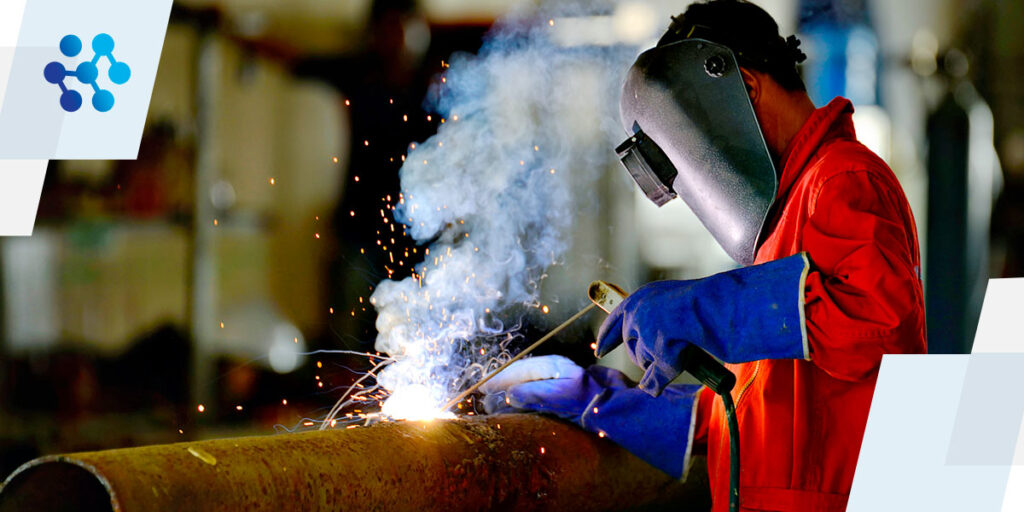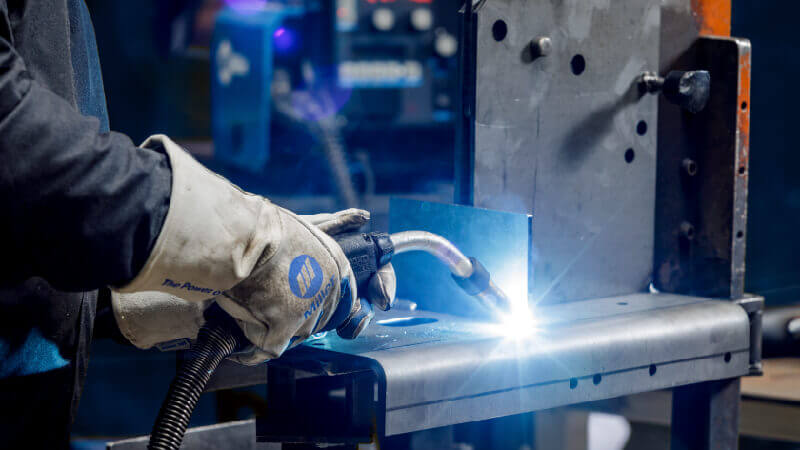Top 5 weld defects tackled by Belgrade Welding experts
Wiki Article
All Regarding Welding: Secret Insights Into Techniques and Ideal Practices for Success
Welding incorporates a variety of techniques, each fit for certain products and applications. Comprehending these approaches, such as GMAW, SMAW, and TIG, is crucial for achieving suitable outcomes. Moreover, the right tools and safety methods can not be forgotten. As prep work and repairing play essential functions in the welding procedure, mastering these components can greatly improve the top quality of the final item. What are the vital aspects that assure an effective weld?Comprehending Different Welding Strategies
Welding methods include a range of techniques, each suited to specific applications and materials. Among one of the most common methods are Gas Metal Arc Welding (GMAW), Shielded Metal Arc Welding (SMAW), and Tungsten Inert Gas Welding (TIG) GMAW, also called MIG welding, is prominent for its speed and adaptability, making it perfect for thin materials. SMAW, or stick welding, is favored for its simplicity and performance in exterior environments, specifically with thicker steels. TIG welding offers accuracy and control, making it ideal for detailed job and non-ferrous metals (Belgrade Fabrication). Each technique has its unique benefits and considerations, enabling welders to pick the very best technique based upon the task's needs, product type, and wanted results. Comprehending these strategies is necessary for successful weldingNecessary Welding Equipment and Devices
While various welding strategies need particular skills, the best devices and tools are similarly essential for attaining high quality outcomes. Important welding tools consists of welding devices, which vary depending on the method-- such as MIG, TIG, or stick welding. Protective gear, including aprons, gloves, and headgears, guarantees safety and comfort during the process. Furthermore, components and clamps assist secure materials in position, ensuring precision in welds. Consumables like welding poles, wire, and protecting gas are also essential components that affect the quality of the weld. In addition, tools such as cutters and grinders help with surface preparation and post-weld ending up, contributing to a professional result. Investing in high-quality equipment eventually boosts the effectiveness and efficiency of welding tasks.Security Practices in Welding
Proper safety practices are necessary in the welding sector to secure workers from possible dangers. Welders must wear suitable individual safety devices (PPE), including safety helmets with proper shading, handwear covers, and flame-resistant apparel. Adequate ventilation is essential to reduce direct exposure to dangerous fumes and gases generated during the welding process. Additionally, employees must be educated in the proper handling of welding equipment to prevent crashes. Fire security procedures, such as maintaining flammable materials away from the welding location and having fire extinguishers conveniently offered, are necessary. Regular evaluations of equipment and work spaces can assist determine possible hazards before they cause crashes. By adhering to these security practices, welders can develop a safer working setting and lessen risks associated with their profession.Preparing Products for Welding
Preparing products for welding is a vital step that substantially affects the high quality and integrity of the final product (Montana Mobile Welding and Repair Fabrication). Correct preparation entails cleaning up the surface areas to get rid of pollutants such as dust, oil, and rust, which can endanger the weld. Strategies such as grinding, sanding, or making use of solvents are typically employed to accomplish a clean surface. In addition, guaranteeing that the products mesh well is important; voids can cause weak welds. It's likewise important to consider the alignment and positioning of the parts, as this will certainly affect the convenience of welding and the final result. Ultimately, selecting the ideal filler product and making certain compatibility with the base steels is important for achieving strong, long lasting weldsTips for Getting High-Quality Welds
Accomplishing top notch welds requires attention to information and adherence to ideal techniques throughout the welding procedure. Correct joint prep work is essential, ensuring surface areas are clean and totally free from contaminants. Selecting the proper filler material and welding method based on the base steels is critical for optimal bonding. Maintaining regular travel rate and angle while welding can promote and prevent issues harmony. Furthermore, regulating heat input is important; extreme heat can bring about warping and compromised joints. If required, routinely examining the welds throughout the process permits for prompt adjustments. Utilizing suitable post-weld therapies, such as cleansing and anxiety relief, can enhance the resilience and integrity of the weld, ultimately ensuring an effective end result.Troubleshooting Typical Welding Issues
Welding commonly presents difficulties that can affect the high quality and honesty of the end product. Common concerns such as porosity, irregular weld beads, and overheating can arise, each requiring particular troubleshooting methods. Comprehending these troubles is necessary for welders to improve their abilities and attain ideal outcomes.Porosity Troubles Discussed
Porosity can usually be overlooked, it continues to be an essential problem in welding that can jeopardize the honesty of a completed product. Porosity refers to the presence of small gas pockets within the weld grain, which can weaken the joint and lead to premature failure. This problem usually occurs from impurities, dampness, or improper protecting gas insurance coverage throughout the welding process. To mitigate porosity, welders ought to confirm that the base materials are clean and completely dry, utilize appropriate securing gases, and preserve regular welding criteria. Regularly evaluating the devices and atmosphere can also aid determine possible problems prior to they show up in the weld. Attending to porosity efficiently is crucial for accomplishing strong, sturdy welds that satisfy quality criteria.
Inconsistent Weld Beads
Irregular weld grains can greatly impact the high quality and toughness of a finished item. Numerous factors add to this problem, including incorrect travel speed, incorrect amperage setups, and inconsistent electrode angles. When the welder relocates also rapidly, a grain might show up narrow and do not have penetration, while moving as well slowly can create too much accumulation. Additionally, making use of the wrong amperage can result in either undercutting or extreme spatter, both of which concession weld honesty. The welder's strategy, such as irregular torch activity, can additionally result in irregular bead appearance. To mitigate these issues, welders need to concentrate on preserving consistent, regulated movements and guaranteeing proper equipment settings to achieve harmony in their welds. Consistency is crucial to accomplishing solid and trustworthy welds.Overheating and Warping Issues
Too much warmth throughout the welding process can cause substantial getting too hot and warping problems, influencing the structural integrity of the work surface. These troubles typically materialize as distortion, which can jeopardize placement and fit-up, making additional setting up challenging. Aspects adding to overheating consist of the choice of welding specifications, such as voltage and travel rate, as well as the type of material being bonded. To mitigate these problems, welders need to preserve constant travel rate and suitable heat input while keeping track of the workpiece temperature. In addition, preheating or post-weld heat therapy can aid alleviate anxieties caused by quick cooling - Montana Mobile Welding and Repair. Normal assessment and adherence to ideal techniques are essential in stopping overheating and making certain the long life and integrity of welded structuresOften Asked Concerns
What Are the Job Opportunities in the Welding Industry?
The welding market uses diverse career chances, including settings as welders, designers, examiners, and instructors. Specialists can operate in production, construction, aerospace, and vehicle sectors, gaining from solid need and affordable incomes in different roles.Exactly How Can I Enhance My Welding Speed Without Compromising Top Quality?
To boost welding speed without giving up top quality, one need to practice reliable strategies, keep tools, maximize settings, and improve hand-eye sychronisation. Routine training and seeking comments can likewise greatly contribute here to accomplishing quicker, high-quality welds.What Certifications Are Offered for Welders?
Various accreditations exist for welders, including those from the American Welding Society (AWS), the National Center for Building And Construction Education And Learning and Study (NCCER), and numerous industry-specific companies. These qualifications boost employability and demonstrate ability effectiveness.How Does Welding Impact the Features of Metals?
Welding affects the properties of steels by altering their microstructure, which can cause adjustments in stamina, solidity, and ductility. Warmth input and cooling rates throughout the process considerably impact these product features.Can I Weld Dissimilar Metals With Each Other?

Report this wiki page